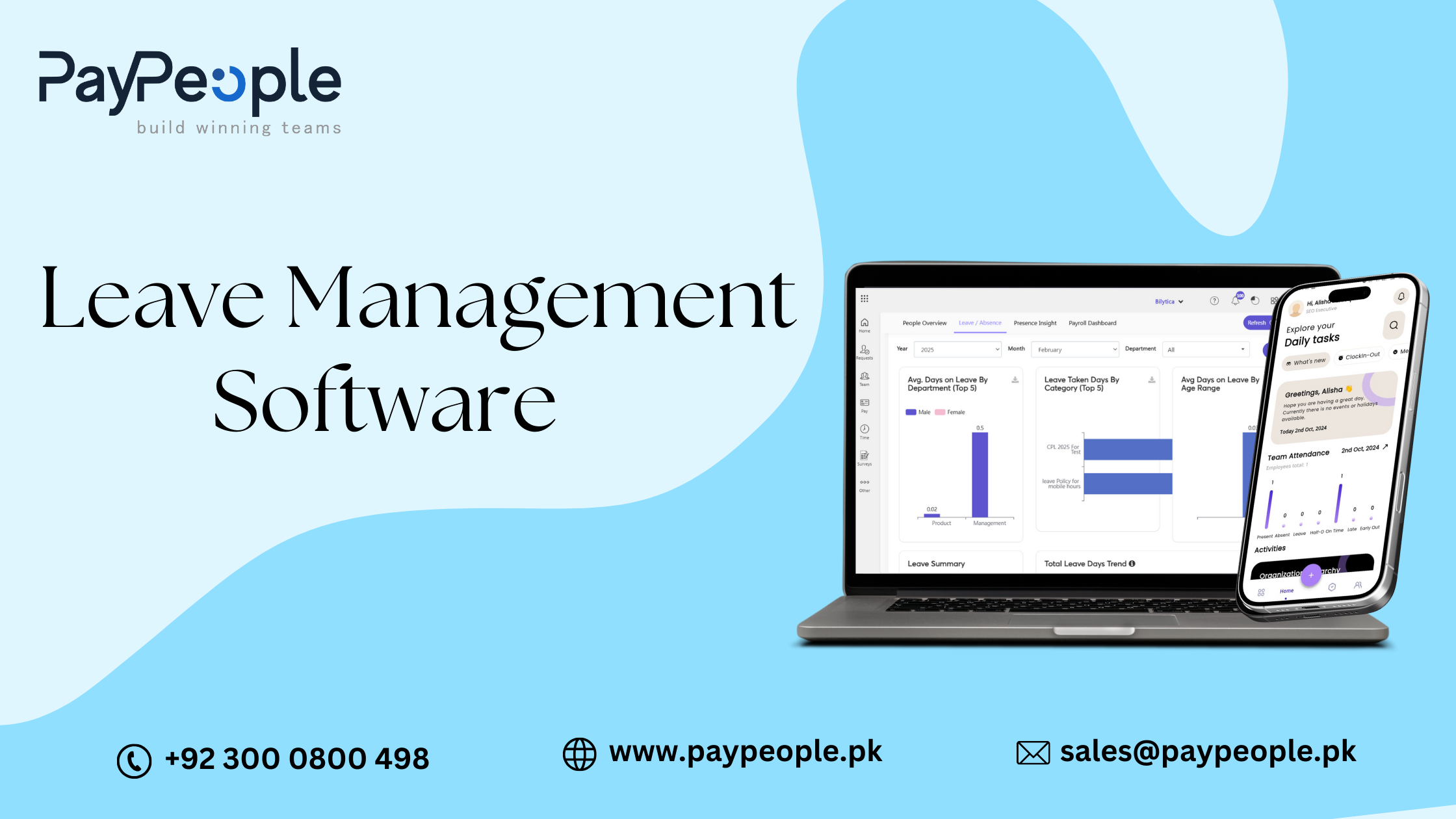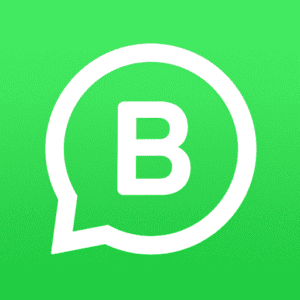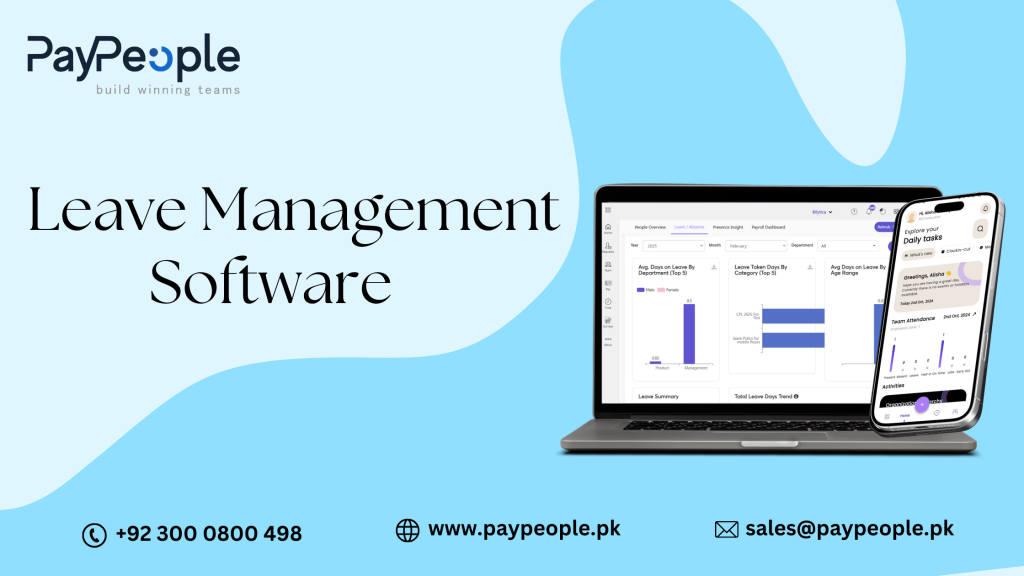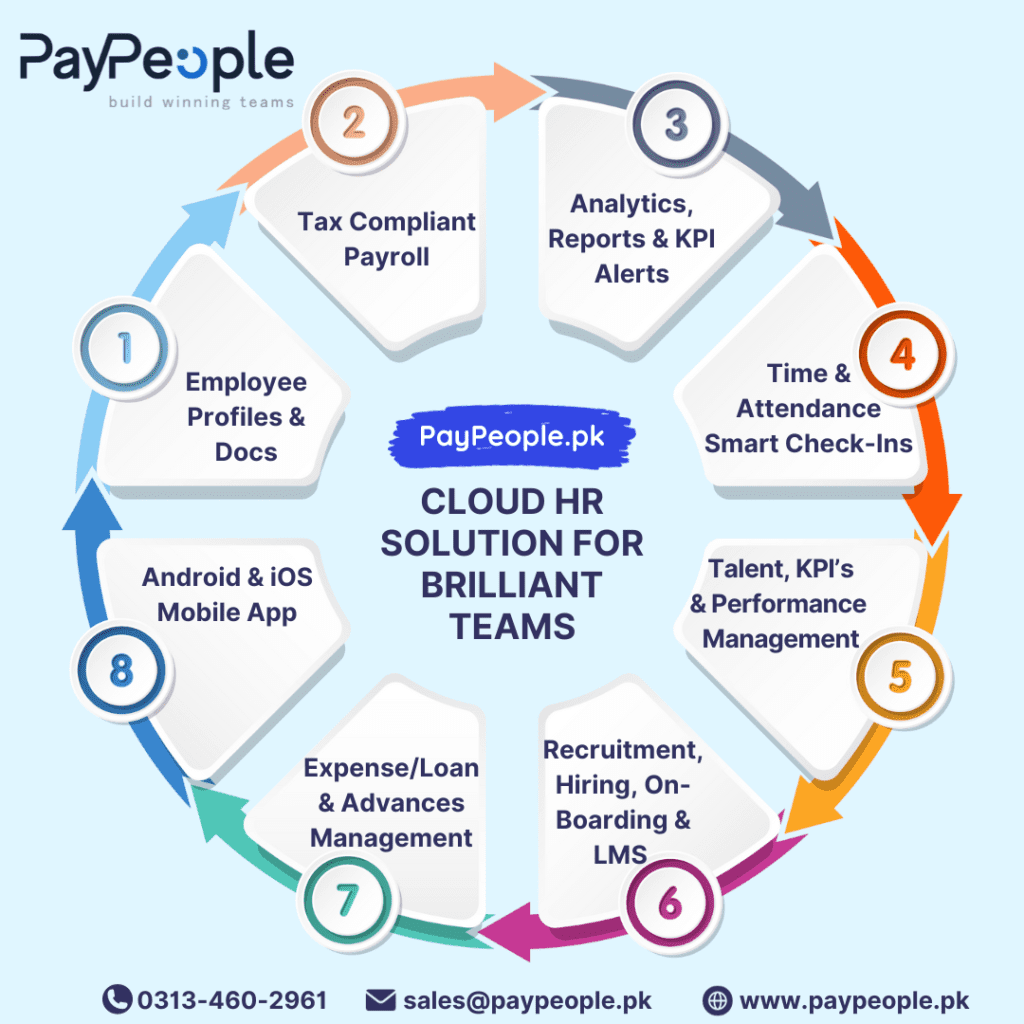In a world where digital transformation defines organizational success, traditional methods of managing employee leave are rapidly becoming obsolete. Relying on paper-based systems or basic spreadsheets not only hampers efficiency but also increases the likelihood of human error, policy misinterpretation, and non-compliance with labor laws. For HR software buyers—particularly within SMEs and large enterprises—modernizing leave management is not just a technological upgrade; it is a strategic imperative.
Leave management software (LMS) enables businesses to automate and streamline the entire leave lifecycle, from employee requests to managerial approvals, accrual tracking, and policy enforcement. By transitioning from paper to digital, organizations gain improved visibility, centralized data control, and increased employee satisfaction. This article explores the benefits, challenges, and strategic importance of adopting leave management software in the evolving business landscape.
The Challenges of Traditional Leave Management
Manual leave processes are inherently inefficient and prone to administrative complications. Paper forms, emails, and Excel sheets often require HR teams to perform time-consuming calculations, cross-check accruals, and manually apply organizational leave policies. Some of the most common challenges include:
-
Human Error: Miscalculations in leave balances and inaccurate tracking often result in disputes between employees and HR departments.
-
Lack of Transparency: Employees have limited visibility into their leave status, leading to repeated queries and dissatisfaction.
-
Policy Inconsistency: In the absence of centralized enforcement, policies may be applied unevenly across departments or regions.
-
Compliance Risks: Without automated systems, organizations may unknowingly violate local labor laws regarding leave entitlements and documentation.
-
Administrative Overload: HR teams spend a significant portion of their time handling routine leave tasks that can easily be automated.
These challenges impact not only operational efficiency but also employee morale and overall business productivity.
Why Go Digital? The Strategic Role of Leave Management Software
Leave management software is designed to address these issues by automating repetitive tasks, applying policies consistently, and providing real-time insights into leave patterns and availability. For businesses aiming to scale operations or enhance their HR practices, LMS offers the following strategic advantages:
Centralized and Automated Workflow
An LMS centralizes all leave-related processes within a unified platform. Employees can submit requests, view their leave balances, and track approvals—all through an intuitive self-service portal. Meanwhile, managers receive automated alerts and can make informed decisions based on availability and workload. This reduces the dependency on HR personnel for every minor query or update.
Real-Time Leave Balance Tracking
With automated accruals and integrations with payroll and attendance systems, leave balances are updated in real time. This ensures accurate payouts, prevents overutilization, and helps HR departments avoid reconciliation headaches at the end of the month or fiscal year.
Policy Customization and Compliance
Leave management software allows businesses to configure policies based on different criteria such as tenure, location, employee type, or department. Additionally, it ensures that leave policies remain compliant with national labor laws and any updates in regulatory requirements.
Data-Driven Decision-Making
Modern LMS platforms generate detailed reports and analytics on leave trends, absenteeism, departmental coverage, and more. This empowers HR leaders to identify potential bottlenecks, forecast workforce needs, and make strategic workforce planning decisions.
Improved Employee Experience
A digital leave system enhances transparency and empowers employees with self-service tools. Whether it’s checking leave balances or applying for a vacation, employees can complete their tasks in a matter of seconds—resulting in higher satisfaction and better engagement.
Integration with Other HR Functions
Most robust leave management systems integrate seamlessly with payroll, time tracking, and HRIS platforms. This ensures that leave deductions are accurate, time-off aligns with attendance data, and all records are updated across systems without manual effort.
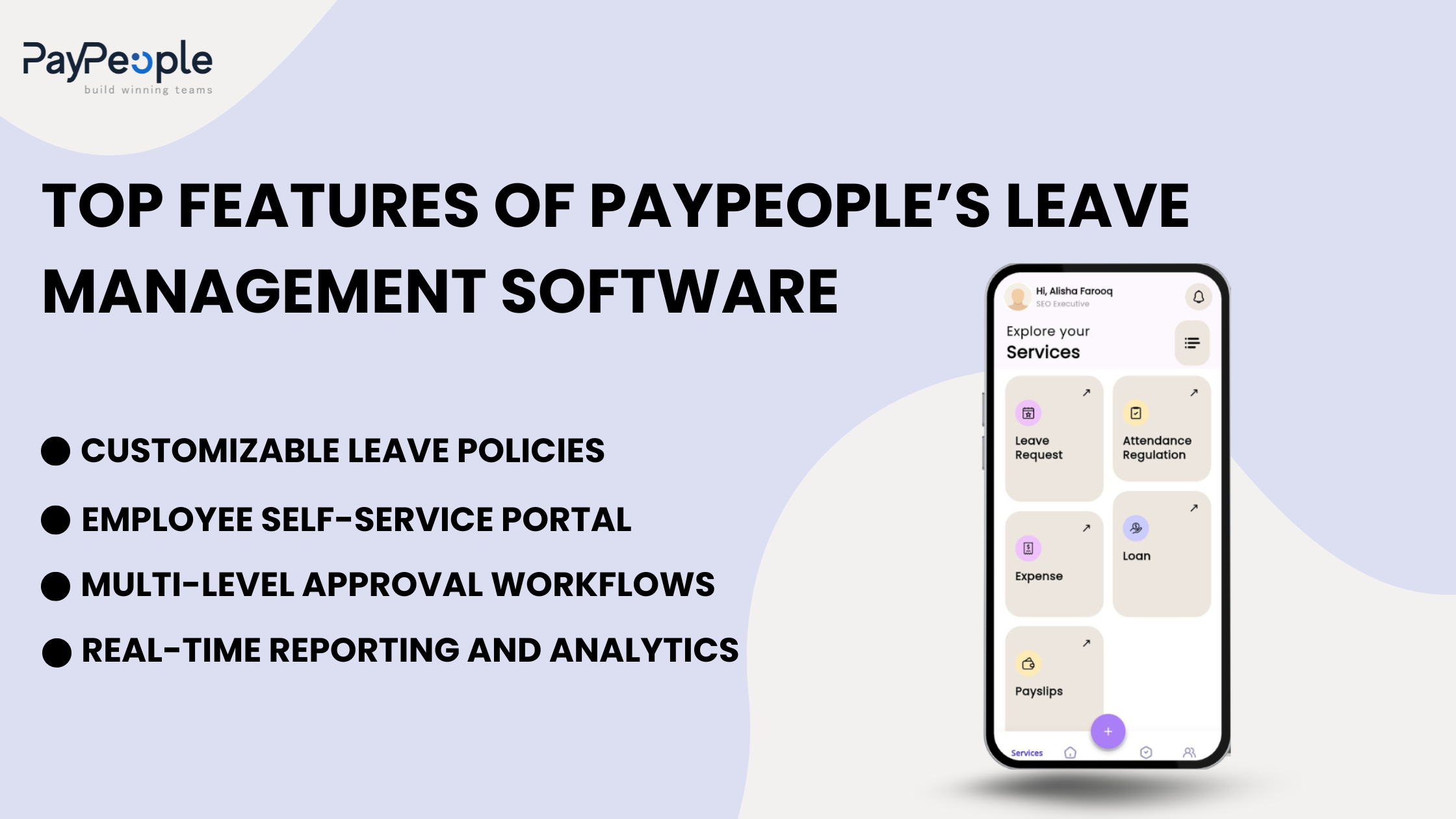
Use Case: How PayPeople Leave Management Software Solves Real Problems
For HR buyers in Pakistan and beyond, PayPeople’s Leave Management Software offers a localized and intelligent solution to the above challenges. Here’s how:
-
Localized Compliance: Tailored to align with Pakistani labor regulations, ensuring that businesses meet legal requirements without added stress.
-
Self-Service Portal: Employees can request leave, upload supporting documents, and track approvals—reducing HR workload and improving responsiveness.
-
Smart Notifications: Managers and employees receive automated alerts for approvals, balance updates, and policy violations.
-
Customizable Leave Types: From annual leave to casual, sick, or maternity leave—organizations can define policies and eligibility criteria according to their internal HR structure.
-
Cloud-Based Accessibility: HR teams and employees can access the platform anytime, anywhere—ideal for hybrid and remote workforce models.
-
Audit Readiness: Comprehensive digital records support internal audits, legal inquiries, and employee disputes, eliminating the need for cumbersome paperwork.
Overcoming Resistance to Change
Despite the clear benefits, digital transformation often encounters internal resistance. Some employees may be hesitant to adapt to new systems, while managers might be wary of implementation complexity. To address these concerns, organizations must:
-
Conduct Training Sessions: Provide structured onboarding and support for both employees and managers.
-
Communicate Benefits Clearly: Emphasize how automation reduces manual tasks and empowers staff.
-
Choose User-Friendly Software: Select a system with an intuitive user interface and a minimal learning curve.
-
Involve Stakeholders Early: Engage department heads and HR leaders during the selection and customization process.
When implemented correctly, the adoption curve for leave management software can be smooth and beneficial across all organizational levels.
Digital Transformation and Business Growth
For growing businesses, the digitization of HR functions such as leave management is no longer a matter of convenience—it is a business necessity. Manual systems may suffice for small teams, but as employee strength increases, the risk of inefficiency multiplies. Leave management software supports organizational scalability by:
-
Reducing operational costs through automation
-
Enhancing internal controls and policy enforcement
-
Supporting hybrid and distributed workforces with centralized data access
-
Improving HR agility in responding to employee needs and legal changes
These advantages translate directly into higher productivity, fewer disputes, and a more resilient HR infrastructure—key components of a successful enterprise.
What to Look for When Choosing a Leave Management Software
When evaluating potential solutions, HR software buyers should consider the following factors:
-
Customizability: Can the software accommodate your unique leave policies and approval workflows?
-
Integration: Does it sync with existing payroll, attendance, or HRMS platforms?
-
Compliance: Is the system aligned with local labor laws and industry-specific regulations?
-
User Experience: Is the platform accessible and easy to use for both HR staff and employees?
-
Reporting Capabilities: Can it generate actionable insights through visual dashboards and detailed reports?
-
Support and Training: Does the vendor offer ongoing support, training, and system updates?
A well-informed selection process ensures that the software becomes a long-term asset rather than a short-term solution.
Conclusion: Embrace the Digital Shift
The shift from paper-based systems to digital platforms represents a fundamental improvement in how businesses manage one of their most sensitive and impactful HR functions—leave management. As organizations aim to build efficient, compliant, and employee-centric workplaces, embracing automation becomes an indispensable strategy.
Leave management software like PayPeople not only simplifies routine tasks but also strengthens HR’s role as a strategic business enabler. By transforming the leave process from a manual chore into a streamlined experience, businesses unlock better productivity, transparency, and employee trust.
Now is the time to move away from spreadsheets and paper forms. The future of HR lies in intelligent, integrated systems—and leave management is the perfect place to begin that transformation.
You can explore our other blogs, like
- Boost Efficiency and Employee Satisfaction with Payroll Software
- What is HR Analytics and Why It Matters for Modern Businesses
- Save Time with Automated Leave Management Software
